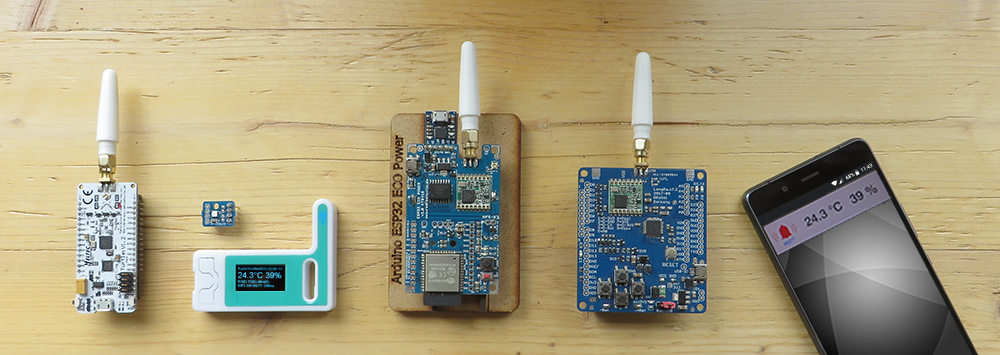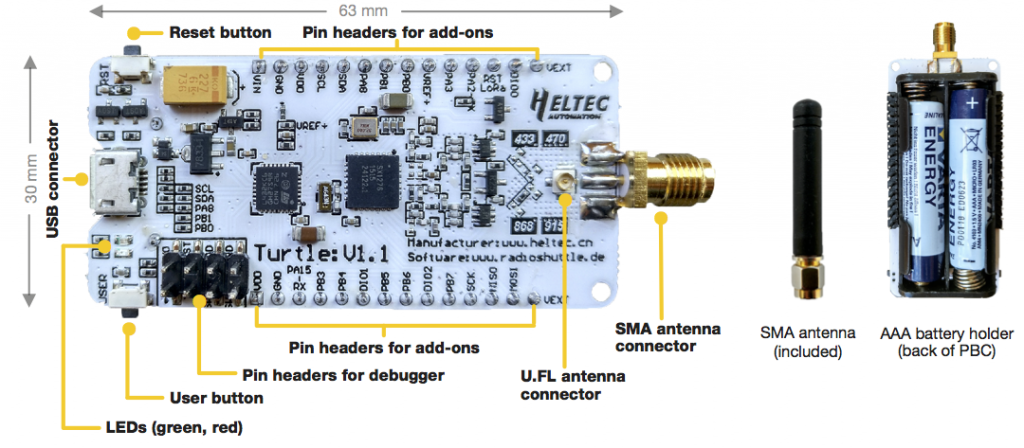
The Turtle board is available on eBay and in our online shop:
Online Shop
Turnkey LoRa solution running 10 years on batteries
The LoRa wireless technology allows sensors to communicate in the free ISM band across long distances from 200 m to 20 km, suited for small data rates.
The turnkey Turtle solution can be used immediately. The included RadioShuttle radio protocol software enables node-to-node communication without additional routers and servers. The Turtle LoRa board by HelTec Automation can run 10 years on AAA batteries (standard or rechargeable NiMH) using the “RadioShuttle” LoRa wireless low-energy protocol software, but can also be operated with an external power supply. An optional temperature and humidity sensor can be plugged on or used externally.
The groundbreaking LoRa wireless solution is ideal for many industrial and IoT applications.
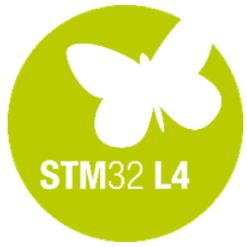
Energy-optimized with an STM32L432 low-power MCU
Due to its overall energy-optimized Turtle board hardware design, combined with a low power STM32L432 processor from STMicroelectronics, the Turtle LoRa solution is perfectly suited for battery operation. The board can be connected to a Windows, Linux or Mac computer via a USB port for programming and data logging.
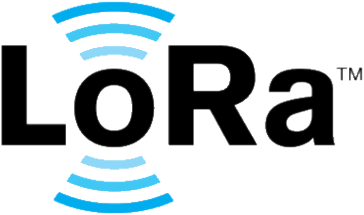
Integrated LoRa radio
The LoRa radio is designed for a maximum constant transmit power of +17 dBm or 50 mW, whereby in the EU we may not exceed an effective radiated power of +14 dBm – the maximum permissible transmit power. The achievable link budget, which roughly speaking represents the quality of the entire radio link with all losses and gains, is specified as 168 dB. The LoRa radio is based on the Semtech SX1276 chip.
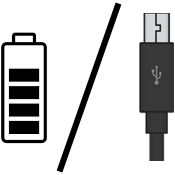
Flexible power supply
The operating voltage for the Turtle board can be supplied by two AAA batteries. For this purpose, a battery holder for the AAA cells (batteries or rechargeable NiMH) is permanently installed on the back of the board. This is particularly energy-saving and guarantees a long mains-independent operating time with a battery life of up to 10 years.
Alternatively, the board can also be completely powered via a micro-USB connection. For external battery power supply a micro-USB port is available, or an external supply voltage (3.4-5 volts) can be attached to the VIN pin. The choice of power supply, battery or USB/external, is automatic, with external supply always having priority. If the USB/external power supply fails, the system automatically switches to battery or rechargeable battery.
IO concept
The two rows of extension headers on the Turtle board are connected to signals of the STM32 MCU, VDD power and software switchable power (VEXT). Various pins are already internally preassigned by the system and may be used in a shared way for own applications, see the “xPinMap.h” file and the connection diagram below for details. For common sensor nodes, sufficient digital, analog, serial, SPI, I²C, and power connections are available.
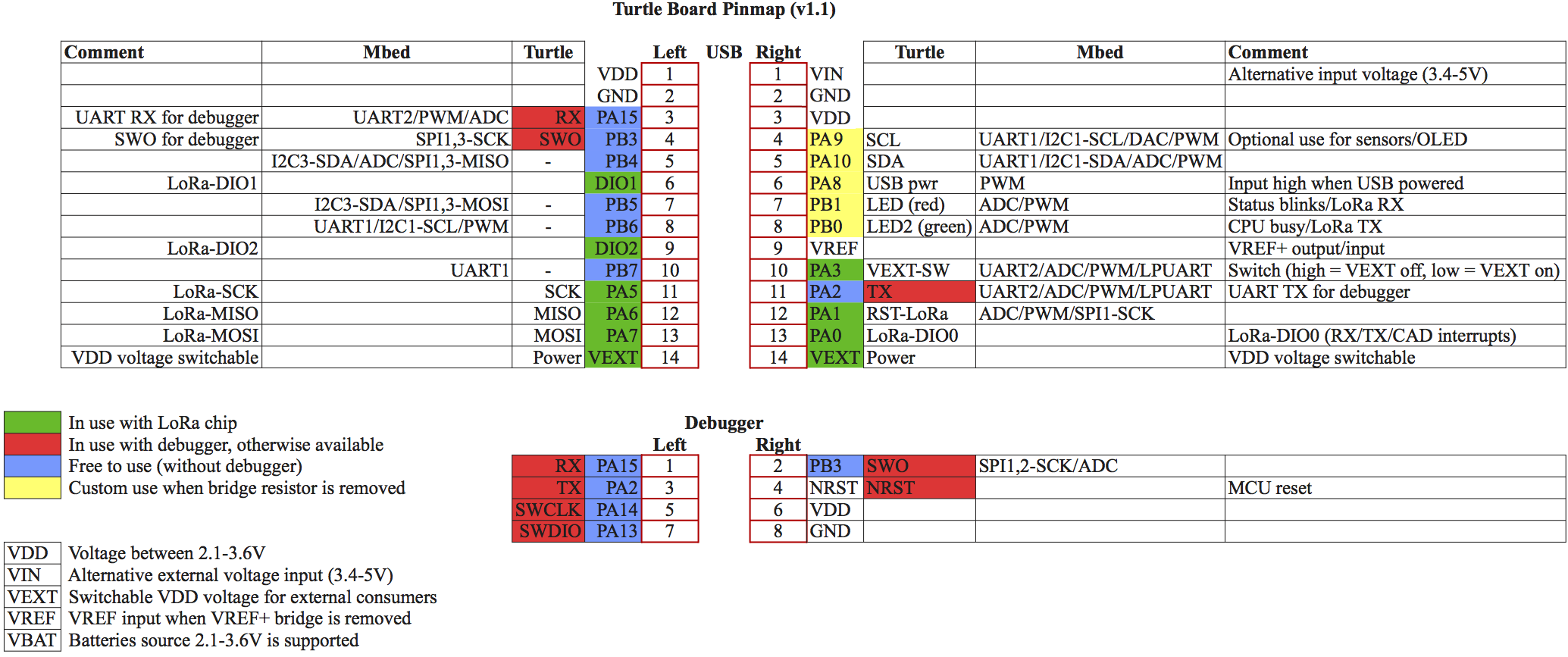
On the left side of the board – SMA antenna points to the right – are the reset and user buttons.
Two LEDs (green and red) are located next to the USB connector.
In RadioShuttle LoRa radio operation, the green LED lights up when transmitting and the red LED when receiving radio data. In addition, the red LED shortly flashes every 2 seconds in order to indicate that the board is active. If necessary, the IO lines of the LEDs can also be repurposed. A debugger interface (2 x 4 pins) is provided for STLink compatible remote debugging.
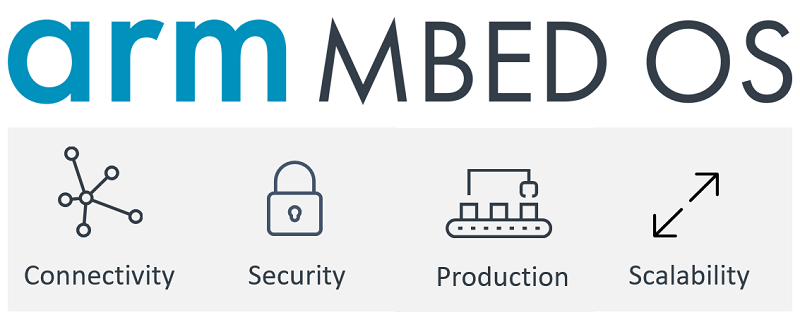
Professional software development (Arm Mbed IDE)
A turnkey and very easy-to-use online IDE allows everyone to get started quickly developing IoT solutions. Be it a beginner or a professional multi-user collaborative development team, the Mbed IDE can handle this easily. Within a minute, the Turtle peer-to-peer LoRa wireless protocol RadioTest demo software gets loaded, compiles, downloads and works.
RTC clock
The MCU has an integrated RTC clock which provides a proper time as long as the board is powered. The RTC continues in lowest power mode (“deepsleep”). The RTC can wake up the MCU when needed.
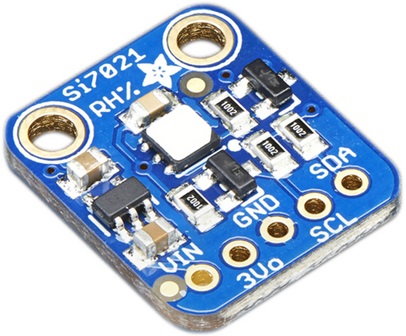
Temperature and humidity sensor (optional)
The optional sensor draws very little power (< 1 µA) in idle mode and allows a regular precise measurement of temperature and humidity. In order to use the sensor as flexibly as possible according to the requirements, it can be plugged onto the debugger pin header (included in shipping, must be soldered onto the board). Alternatively, the sensor can also be positioned externally with a cable. The software for reading out the sensor is integrated in the RadioShuttle software. Just connect it and you’re done!
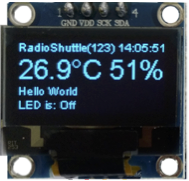
OLED display (optional)
An optional OLED display is available, which can be connected to the I²C pin header. See Operating the ECO Power board with an OLED display.
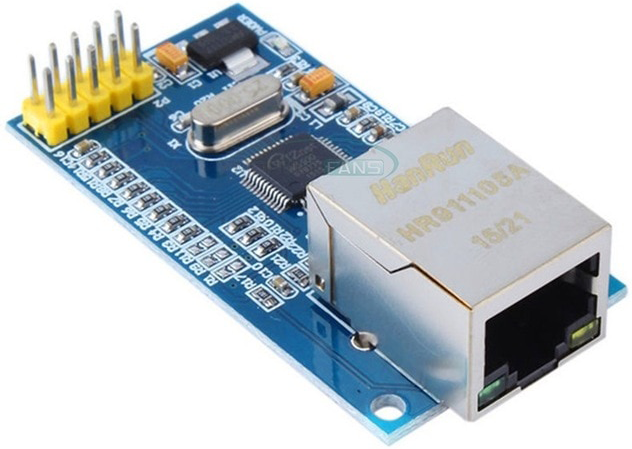
Ethernet module (optional)
An optional W5500 Ethernet module brings a 10/100 Ethernet port with TCP/IP networking to the board. Network software drivers with samples are included in the RadioShuttle software for the Turtle board.
Energy management
We have designed the board to be as energy efficient as possible to achieve a long battery life. This includes the use of high-impedance blocking MOSFETs for the power supply and switching functions as well as an overall low-current circuit design.
The RadioShuttle software supplied with the Turtle board is adapted to this hardware. Through various energy-saving algorithms ranging from packet size optimization and automatic reduction of transmission power in good transmission conditions to the use of the “sleep” and “deepsleep” functions of the MCU, they are an essential component of sophisticated energy management.
By using the RadioShuttle example software with integrated power saving function, this LoRa solution makes it easy for everyone to set up battery-powered wireless solutions.
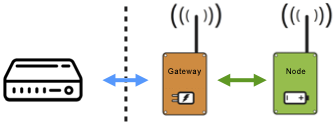
RadioShuttle MQTT gateway
The RadioShuttle software contains an MQTT gateway which establishes a connection between the RadioShuttle station, with the connected node(s), and an MQTT server. This enables bidirectional message exchange between MQTT and LoRa.
RadioShuttle gateway description …
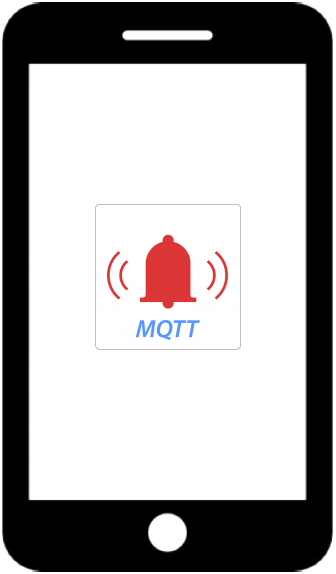
MQTT Push Client app
MQTT topics defined in the MQTT Push Client app are monitored by the RadioShuttle MQTT push server. When they become active, they are immediately forwarded to the app, where the message is displayed together with an optional audio signal as a push notification.
MQTT Push Client (app) description …
Scope of delivery
Listing of the individual parts included in the Turtle delivery (per board):
- Turtle board with LoRa
- SMA antenna
- Pin header (2×14) for extensions (pre soldered)
- Pin header (2×4) for debugger
For the first commissioning it is sufficient just to connect the SMA antenna. The rest is optional and is described in the Turtle documentation. A micro-USB connection cable is not included and must be purchased separately.
Continue with Commissioning
